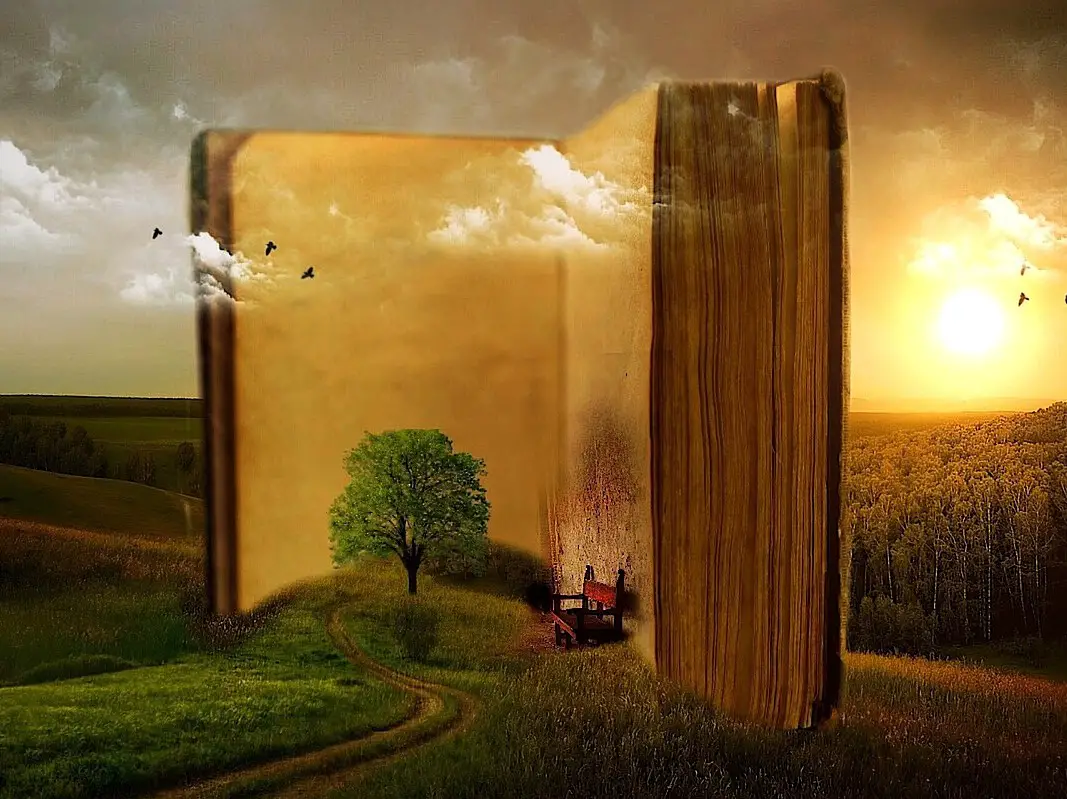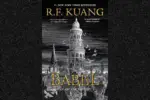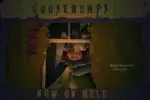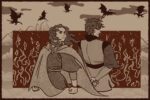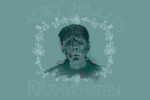Despite its title, young adult (YA) fiction is enjoyed by readers of all ages. Adults and teens alike follow the magical misadventures of Harry Potter, survive a dystopian death match in “The Hunger Games,” discover their fundamental personality trait in “Divergent,” contemplate beauty standards in “Uglies” and battle gods and monsters in “Percy Jackson.” But there is more to literature than just YA fiction.
Many books will forever hold a place of honor on bookshelves, but just as children outgrow toys, readers outgrow genres. Don’t be afraid to stray away from YA fiction and into the greater wealth of fiction writing.
Before delving into authors with more complex narratives, stylistic techniques and character lists, readers who are just stepping out of YA fiction should start with “new adult” fiction. Not to be confused with recently released or literally “new” adult fiction novels, the category is a subgenre of fiction that features young adult protagonists from ages 18 to 25.
St. Martin’s Press coined the term in 2009 to describe fiction books dealing with more mature themes than YA fiction, such as college life, sex, marriage, self-discovery and life’s tragedies.
Popular new adult authors include Lev Grossman (“The Magicians”), Sarah J. Maas (“A Court of Thorns and Roses”) and Cora Cormack (“Faking It”).
Although critics condemn this fiction newcomer as nothing more than a clever marketing ploy, new adult is a good starting point to ease the transition from YA fiction. Some might even find that new adult fiction is exactly the genre they’ve been relentlessly searching for.
You should also consider speculative fiction, which is not technically a subgenre of fiction, but rather an umbrella category for subgenres that twist the reality of our world. This includes science fiction, fantasy fiction, occult (or supernatural) fiction and historical fiction.
Some take issue with this broad lumping of distinct subgenres because each is worthy of individual recognition and exploration. However, for readers beginning to enter the world of adult fiction, outlining every subgenre in detail would be a daunting and overwhelming task. The following novels offer an easy-to-understand sampling of speculative fiction:
Published in 2011, “The Night Circus” by Erin Morgenstern tragically fell from popularity once worthy of seven weeks on The New York Times best-seller list. This is the story of the world’s most powerful magicians and their young proteges. They travel the world with a circus that has no schedules, performs only at night and disappears without a trace.
Such a treasure of fantasy fiction cannot be relegated to the shadows for long. The Circus of Dreams will cast its spell, and readers will find themselves pulled into a dangerous game of magic, love, ambition and fate.
Pete Hamill’s “Forever” is the perfect example of subgenre crossovers — historical fiction with a spice of fantasy. Cormac O’Connor was born in Ireland in the 1700s at the height of both British-Irish and Protestant-Catholic tensions. In 2001, he watches the Twin Towers crumble in Manhattan. Through Cormac’s extensive life, Hamill walks readers through the history of New York with journalistic deft while exploring the gift (or curse) of Cormac’s immortality.
Next, Douglas Adams’ “Hitchhikers Guide to the Galaxy” is an immortalized science fiction classic. As the Earth is moments away from destruction, Arthur Dent is rescued by Ford Prefect. Why? Well, Ford is gathering research for his book about every planet in the universe, and Arthur seems like the perfect source. This guide to the cosmos is witty and satirical and is sure to entertain adults and children alike.
Now, get ready for the author who truly walks between subgenres: Neil Gaiman. Best know for “American Gods” and co-authoring “Good Omens,” Gaiman’s vast corpus includes children’s books, YA fiction (“Coraline” and “Stardust”), novels for adults (“The Ocean at the End of the Lane” and “Neverwhere”), “The Sandman” comics and numerous short story anthologies.
Gaiman’s work caters to children, teens and adults, and he writes astounding works of fiction with elements of horror and fantasy. From the apocalypse of “Good Omens” to a boy raised by ghosts, readers will find that Gaiman offers an extraordinary range of fiction.
Unlike most other fiction subgenres, literary fiction is less concerned with a clearly defined plot and focuses instead on the internal psychological journeys of characters. Their endings tend to be ambiguous and open to interpretation. Works in this genre serve a purpose beyond mere recreational reading — they offer a unique perspective on the human experience and are regarded as literary masterpieces.
Unfortunately, such prestige does not sell well when audiences are searching for clear-cut plots and predictable endings. If, however, you are a reader searching for authors who use captivating language to weave complex characters into a story that gives you pause and makes you wonder, then let these authors carry you on a journey into the intellectual depths of fiction.
The late Tom Wolfe (a journalist by trade) began his reporting career in 1950s and published his first nonfiction book in 1968. His first work of fiction, “The Bonfire of the Vanities,” follows the downfall of Sherman McCoy, a wealthy bond trader on Wall Street, after his mistress fatally injures a Bronx man by hitting him with Sherman’s Mercedes. The novel is heavily influenced by Wolfe’s journalistic style, making its literary merit undeniable.
His next novel, “A Man In Full,” is less language-heavy and more philosophical. The plot consists of an escaped convict and a Georgian billionaire bonding over the ancient philosophy of stoicism, in addition to offering commentary on race relations in 1990s Atlanta. “Back to Blood,” his final novel, also contains elements of his journalistic style. Instead of focusing on Wall Street billionaires in New York or amateur philosophers in Atlanta, “Back to Blood” uncovers life as a Cuban immigrant in Miami.
Don DeLillo was awarded the National Book Award for “White Noise,” was a two-time finalist for a Pulitzer Prize for fiction (for “Mao II” and “Underworld”) and won the Library of Congress Prize for American Fiction. His works primarily investigate American life in the late 20th and early 21st centuries. They cover a vast array of subjects, including nuclear war, gang life, the distractions of technology, politics, terrorism and sports.
Much like Wolfe, DeLillo’s novels and short stories are linguistically challenging, and, though they are more approachable regarding language and style, are still thought-provoking commentary on American society.
If readers are looking for more contemporary literary fiction authors, then Zadie Smith is a perfect choice. Her debut novel, “White Teeth,” is an easy enough read that it is often assigned in advanced high school English courses. Its depth, energy and humor earned the James Tait Black Memorial Prize, The Whitbread Book Award and the Guardian First Book Award.
“White Teeth” centers around two World War II veterans and their families living through a transforming London. Archie Jones’ mixed race family and Samad Iqbal’s much younger wife by an arranged marriage traverse the racial, cultural and religious barriers of London, while attempting to hold onto their own sense of identity.
Smith’s newest novel, “The Fraud,” branches away from her contemporary style and is inspired by the story of highwaymen in 1800s London.
If you’re still looking for a different subgenre, consider magical realism, which is meritable enough to be considered literary fiction but is considered a separate subgenre because of one unique characteristic: magical events are part of everyday life. For characters in these novels, magical elements are as common as air or water — they are neither extraordinary nor otherworldly.
Magical Realism is particularly associated with Latin American authors such as Jorge Luis Borges (“Labyrinths”), Gabriel García Márquez (“One Hundred Years of Solitude”) and Isabel Allende (“The House of Spirits”). Famous English magical realism authors include Salman Rushdie (“Midnight’s Children” and “The Satanic Verses”) and Alice Hoffman (“The Dovekeepers” and “Practical Magic”).
These works are ideal for readers who enjoy a good magical kick to their fiction but find fantasy and science fiction excessive in their supernatural elements. Magical realism authors spin magic into the very laws of nature in their literary worlds, making its presence in the storyline less overbearingly fantastical.
Thus, there are multiple genres, authors and books to explore once you’ve exhausted the YA fiction on your shelf. So, get comfortable, and dive into another world.


